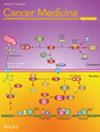Cervical cancer poses a significant threat to women's health and encompasses various histological types, including squamous cell carcinoma (SCC), cervical adenocarcinoma (CA), and adenosquamous carcinoma. CA, in particular, presents a formidable challenge in clinical management due to its low early detection rate, pronounced aggressiveness, high recurrence rate, and mortality, compounded by the complexities associated with late-stage treatment. There is limited understanding of the similarities and differences in the pathogenesis mechanisms between CA and SCC, such as tumor heterogeneity and the tumor immune microenvironment (TME).
A literature search was carried out in the PubMed, Web of Science, and Google Scholar databases using the following research terms: “gynecological oncology,” “cervical cancer,” “cervical adenocarcinoma,” “epidemiology,” “diagnosis and treatment of cervical adenocarcinoma,” “Human papillomavirus,” “World Health Organization,” “tumor microenvironment,” “single-cell RNA sequencing,” “molecular mechanism,” and “preclinical research model.”
This review consolidates the epidemiological characteristics, diagnostic and therapeutic hurdles, and the latest advances in research on CA. It aims to highlight the significant heterogeneity of the TME characteristics exhibited by CA compared to SCC. Additionally, we also summarize the common preclinical models for CA and discuss the advantages and disadvantages of using various models in research. We aspire that the discussions presented herein will offer novel insights and directions for subsequent research, as well as clinical diagnosis and treatment strategies for CA.



